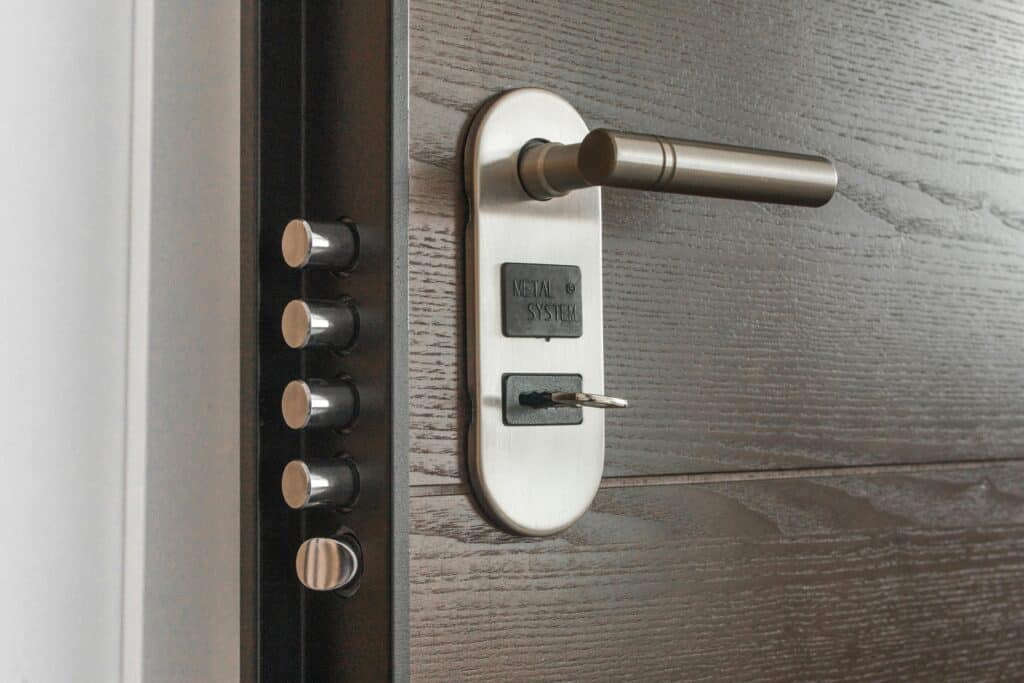A malfunctioning safe can be inconvenient, especially when it guards your most valuable possessions. Furthermore, blindly trying to tinker with your expensive safe could potentially make things worse! Fortunately, this article will tell you everything you need to know when dealing with a malfunctioning safe!
How do you fix a safe that won’t open?
So your safe isn’t opening? The first step is to remain calm and troubleshoot the problem systematically. Often, the issue might be minor and can be resolved with a few simple steps. Start by checking the batteries in an electronic lock, as low or dead batteries are a common culprit. Replace them with high-quality alkaline batteries and try the code again.
If the code is correct but the safe still won’t open, examine the lock for any visible damage or obstructions. Cleaning around the keypad or dial can help remove any dust or debris that might interfere with the mechanism. If these steps don’t work, consult the safe’s manual for specific troubleshooting tips and consider using the override key if available.
Dealing with Electronic Safes with Biometric Locks
Biometric locks offer advanced security but can also have unique issues. If your biometric safe isn’t opening, recalibrate the scanner to ensure it recognizes your fingerprint accurately. Clean the scanner with a soft, lint-free cloth to remove smudges or dirt. If the biometric scanner fails, utilize backup entry methods such as a key or numerical code.
Handling Malfunctions in Manual Locks
Manual locks, including combination and keyed locks, can also encounter issues. If your manual lock is stiff, use a graphite-based lubricant to ease the mechanism. Double-check that you’re turning the dial the correct number of times in the right direction. If the problem persists, inspect the lock for visible damage and consult a professional.
Addressing Warped Metal
Warped metal can hinder the proper functioning of your safe. This issue might be due to exposure to high temperatures or physical damage. Assess the extent of the warping; minor warping can sometimes be fixed with gentle manipulation, but severe warping requires professional attention. Avoid DIY fixes to prevent further damage and consult a professional to ensure the safe’s integrity is maintained.
Fixing a Broken Gun Rack in a Gun Safe
A broken gun rack can compromise the organization and safety of your firearms. Use foam or other soft materials to create a temporary gun holder until a permanent fix is implemented. Contact the manufacturer or a specialized safe dealer for a replacement gun rack. If the rack is integrated into the safe’s structure, professional repair might be necessary.
When to Call a Professional
If basic troubleshooting doesn’t resolve the issue, it might be time to call a professional. Attempting to force the safe open can damage it, making the problem worse. Reach out to the safe’s manufacturer for assistance, or hire a certified locksmith with experience in safe repair to diagnose and fix more complex issues.
Maintaining Your Safe
To avoid future malfunctions, regular maintenance of your safe is essential. Periodically inspect your safe for signs of wear and tear and address small issues early to prevent them from becoming significant problems. Keep the safe clean by removing dust and debris from the lock mechanism and replacing batteries in electronic locks annually to prevent battery-related malfunctions.
Dealing with a malfunctioning safe doesn’t have to be daunting. By following these steps, you can often resolve the issue quickly and efficiently. Remember, if the problem persists, professional help is always available. For more information on maintaining and securing your safe, you should contact North American Safes! North American Safes offers expert advice and services to secure your valuable possessions.
Let Us Help!
North American Safes assists our customers with repairs, lock changes, and relocations. When it comes to safes, we are here to help in any way we can. Contact us today with any questions you may have!

